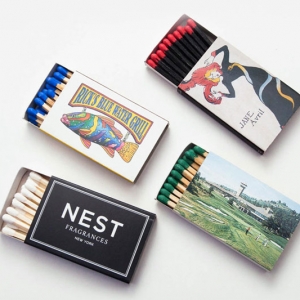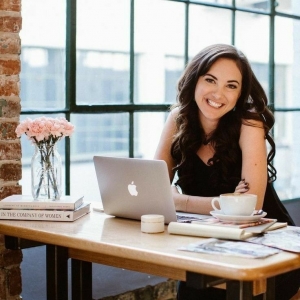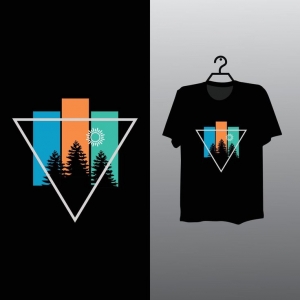Packaging plays a vital role in how a product is perceived by customers. For wholesalers, selecting the right packaging is not just about protection—it’s about branding, cost-efficiency, and sustainability. Before ordering custom kraft boxes, asking the right questions can save money, prevent design mistakes, and ensure customer satisfaction. Below is a complete guide with seven essential questions every wholesaler should ask before placing an order.
1. What Are the Main Purposes of My Packaging?
Before you order packaging, it’s important to define its purpose clearly. Every product has unique packaging needs. For some, the goal is protection during shipping. For others, the focus is on aesthetics and branding. Understanding these goals early helps you communicate effectively with your packaging supplier.
First, consider the protection level your product requires. If the items are fragile, thicker kraft material or added inserts may be needed. Lightweight or soft products might do well with a thinner box. When your packaging aligns with your product type, you reduce waste and avoid damage during transit.
Next, think about your target audience. Packaging is a silent salesman. It speaks to customers before they even touch the product. If your buyers are environmentally conscious, kraft boxes are a great choice due to their natural appearance and recyclable nature. Their earthy tone gives an eco-friendly and authentic impression, aligning with many modern brands.
Also, reflect on your branding goals. Your packaging should represent your company’s values. Custom printed designs, simple logos, or minimal typography can make a big difference in customer perception. When the packaging reflects your brand story, it builds recognition and trust.
By answering this question first, you set a strong foundation for all future packaging decisions. It ensures that every choice, from material thickness to box design, serves your brand and product needs effectively.
2. Which Box Style Fits My Product Best?
Kraft boxes come in various styles, and not every style suits every product. Choosing the right structure ensures safety, functionality, and ease of use. Some of the most common box styles include mailer boxes, tuck-end boxes, sleeve boxes, and rigid boxes. Each serves a unique purpose.
Mailer boxes are perfect for eCommerce packaging. They are durable, easy to assemble, and provide strong protection during shipping. Retailers prefer them for subscription boxes or luxury items. Tuck-end boxes, on the other hand, are commonly used for shelf display. They open and close easily, making them suitable for cosmetics, food, and small gadgets.
Sleeve boxes offer an elegant unboxing experience. They consist of an inner tray and an outer cover that slides to reveal the product. This style works well for premium or gift products. Rigid boxes, while costlier, give a luxurious feel. They are ideal for high-end products that demand strong visual impact.
When selecting a box style, consider how your customers will interact with the product. A convenient unboxing experience improves satisfaction. Also, think about storage and transportation. Some box styles stack better than others, saving space and reducing damage.
Lastly, consult your supplier. A reliable manufacturer can guide you toward the best style for your specific product type. They can suggest practical solutions that balance beauty, cost, and durability.
3. How Can I Ensure the Right Box Size and Strength?
Size and strength are critical factors that influence both cost and product protection. Ordering boxes that are too large leads to higher shipping costs and wasted space. Boxes that are too small risk damaging the items inside.
Start by measuring your product accurately, including its width, height, and depth. Add a small buffer space for cushioning materials such as tissue, paper, or inserts. A snug fit prevents items from shifting during transport. If you ship multiple products together, consider designing a box with dividers or compartments to hold them securely.
The strength of the kraft material also matters. The durability depends on the paper’s thickness, usually measured in GSM (grams per square meter) or fluting grade. Heavier products require thicker kraft board to avoid crushing or tearing. For lightweight products, a medium-strength board is sufficient.
Another factor to consider is how your boxes will be stored. Boxes that will be stacked in warehouses need higher strength than those displayed in stores. Discuss with your supplier the type of kraft material available. They may recommend single-wall, double-wall, or corrugated kraft options.
By asking about box size and strength early, you prevent common issues like poor fit, product damage, and wasted materials. This question ensures your packaging is both efficient and practical for real-world use.
4. What Printing Options Will Enhance My Brand Image?
Printing is where your packaging comes to life. It turns a simple brown box into a branding tool that connects with customers. The printing method and design you choose can make your packaging stand out in a competitive market.
There are several printing techniques to explore. Flexographic printing is affordable for large orders and offers decent quality. Digital printing is best for small runs or when you need vibrant colors and detailed designs. Offset printing delivers the highest quality but is usually cost-effective only for bulk quantities.
When creating a design, focus on simplicity and clarity. A cluttered design can overwhelm customers. Choose colors that match your brand identity. Earthy or muted tones often complement the natural texture of kraft paper beautifully. You can also add finishes like embossing, debossing, or spot UV for a premium touch.
Sustainability is another point to consider. Using soy-based or water-based inks reduces environmental impact. Many brands today prefer minimal designs with eco-friendly printing techniques to align with green values.
Your packaging is often the first impression customers get of your business. Investing in professional printing makes that first impression memorable. With the right visuals and textures, your boxes can effectively tell your brand story and create loyalty.
5. What Is My Budget and Minimum Order Quantity (MOQ)?
Budgeting is an essential part of any packaging decision. Before ordering, ask your supplier about pricing structures and minimum order quantities. Knowing this helps you plan costs and avoid unexpected expenses later.
Most packaging suppliers offer tiered pricing. The cost per box decreases as order volume increases. Ordering in bulk can save money, but you should balance it with storage capacity and forecasted demand. If your business is still growing, avoid overordering to prevent wasted stock.
Ask about hidden costs as well. Printing setup fees, die-cutting charges, and design services can add up quickly. Some suppliers include these in their total quote, while others charge them separately. Understanding these details ensures accurate budgeting.
Also, inquire about the supplier’s minimum order quantity (MOQ). Some may require a high number of boxes per design, which might not suit smaller businesses. Others are more flexible and allow smaller runs. Choosing a supplier that matches your business scale helps maintain steady cash flow.
By planning your budget carefully, you can focus on quality instead of just cost-cutting. Affordable does not always mean better. The right balance between price and quality gives you reliable packaging that supports your brand long-term.
6. How Sustainable Are the Materials and Production Methods?
Sustainability has become a major factor in packaging decisions. Consumers today prefer eco-friendly options that align with their environmental values. Kraft paper packaging is already a sustainable choice, but not all kraft materials are the same.
When sourcing packaging, confirm that your supplier uses recycled or responsibly sourced kraft paper. Look for certifications such as FSC (Forest Stewardship Council) or similar. These certifications ensure the material comes from forests managed for long-term ecological balance.
Also, ask about the inks and coatings used. Some coatings, like glossy lamination, may reduce recyclability. Opt for water-based or biodegradable coatings that maintain both beauty and environmental responsibility.
Manufacturing processes should also be considered. Energy-efficient production methods and waste reduction programs show a supplier’s dedication to sustainability. Partnering with such suppliers can enhance your brand’s green image.
Consumers are increasingly drawn to brands that act responsibly. When your packaging demonstrates environmental care, it helps build trust and loyalty. Sustainability is not just a trend; it’s a long-term business advantage that connects with conscious buyers.
7. How Reliable and Experienced Is the Supplier?
Before committing to any packaging order, evaluate your supplier’s reliability and experience. A good supplier does more than print boxes—they become a long-term partner in your brand’s success.
Start by researching their background. How long have they been in the packaging industry? Established suppliers often have better quality control, faster delivery, and more consistent service. Reading customer reviews and testimonials gives a real-world view of their performance.
Request product samples before placing a large order. This allows you to check the material’s quality, print clarity, and overall finish. A trustworthy supplier will gladly provide samples and guide you through the process.
Communication is key. The supplier should respond quickly and provide transparent information about production timelines, customization options, and after-sales support. Poor communication often leads to errors or delays, which can impact your business.
Finally, ensure the supplier can handle bulk orders efficiently. Wholesalers need consistency and reliability. A partner who delivers on time and maintains quality will support your business growth effectively.
When you find a dependable supplier, you establish a foundation for long-term collaboration. This trust allows you to explore more creative packaging ideas and streamline your operations over time.
Final Thoughts
Before ordering packaging, every wholesaler should go through these seven questions carefully. They act as a checklist to ensure your investment delivers maximum value. Whether it’s defining your goals, choosing the right box style, or confirming supplier reliability, each step contributes to building a strong packaging strategy.
By following these steps, you’ll not only enhance your brand image but also save time, reduce waste, and strengthen customer satisfaction. These thoughtful considerations can help you succeed in the competitive packaging market and make your custom kraft boxes wholesale purchase truly worthwhile.
Visit Our Website: https://ibexpackaging.com/kraft-boxes/







